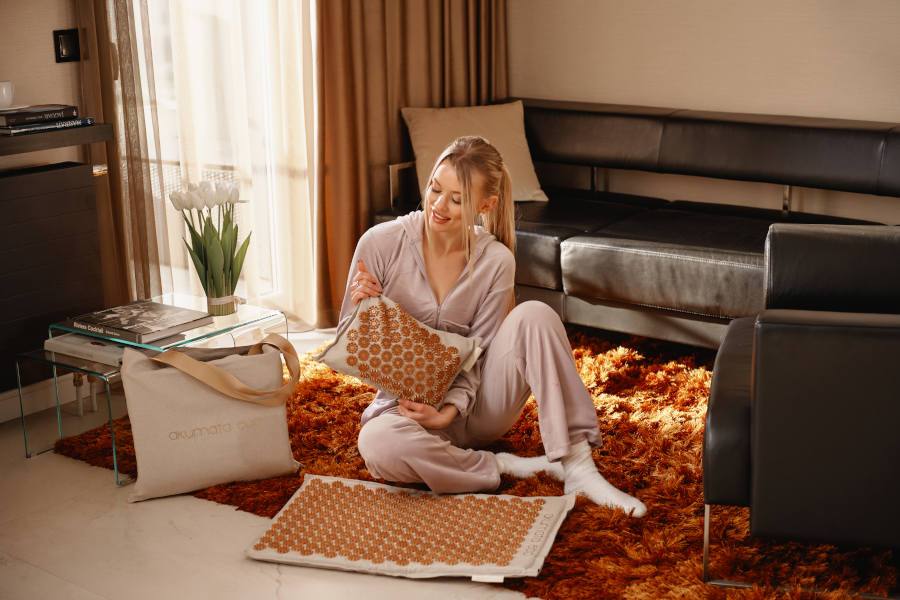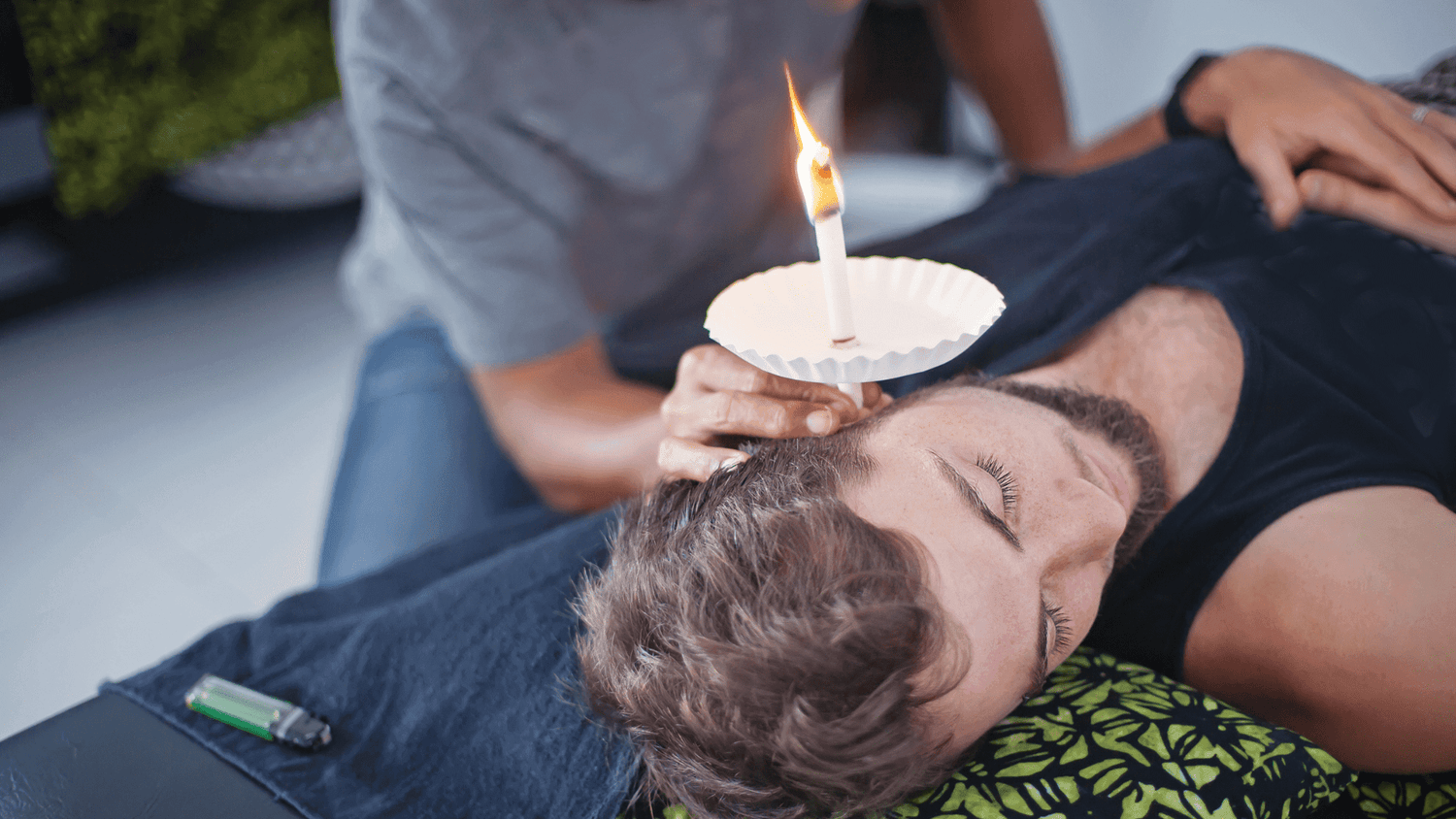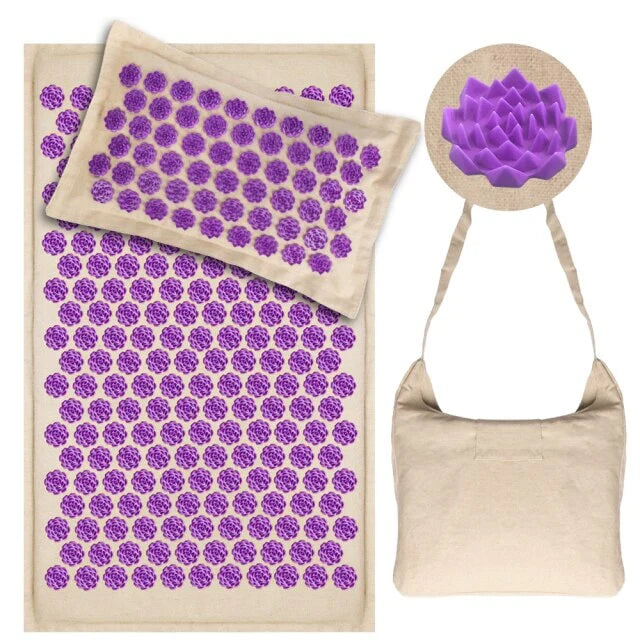Earwax, or cerumen, is a natural substance produced by glands in the ear canal. While it plays a crucial role in keeping our ears clean and protected, excessive buildup can cause discomfort and hearing issues.
This article aims to provide safe and effective methods to remove earwax naturally through gentle massage techniques.
Improper earwax removal methods can lead to impaction or infection, emphasizing the importance of correct practices. Let's explore how to manage earwax with easy, at-home solutions.
Understanding earwax
The essential functions of earwax
Earwax serves several vital functions in maintaining ear health. It acts as a barrier, trapping dust, dead skin cells, and microorganisms, preventing them from reaching the delicate structures of the inner ear.
Additionally, earwax lubricates the ear canal, reducing the likelihood of dryness and itching. Its natural antibacterial properties help protect against infections.
Understanding these functions highlights why removing too much earwax can be harmful, as it plays an integral role in ear hygiene and protection.
Symptoms of earwax buildup
Recognizing the symptoms of earwax buildup is crucial in addressing the issue before it becomes problematic. Common signs include earache, which can range from mild to severe, and tinnitus, a ringing or buzzing noise in the ears.
Partial hearing loss is another indicator, often noticeable when sounds become muffled. Itchiness in the ear canal can also signal excessive wax. By identifying these symptoms early, you can take appropriate steps to manage earwax buildup effectively.
Preparing for earwax massage
Necessary supplies
Before attempting to massage earwax out, gather the necessary supplies. You'll need a warm washcloth to soften the wax, olive oil or mineral oil, and commercial ear drops to aid in the process.
A bulb syringe or saline solution can help flush out the ear. Cotton swabs are useful for cleaning the outer ear but should never be inserted into the ear canal.
A soft towel is essential for drying the ear after treatment. Having these items ready ensures a smooth and safe earwax removal process.
Precautions and contraindications
It's important to take certain precautions when attempting to remove earwax. If you have an ear infection, perforation of the eardrum, or any other ear condition, avoid self-removal and consult a healthcare provider instead.
Improper techniques can exacerbate these issues and lead to serious complications. Always use gentle methods and avoid inserting objects into the ear canal.
Understanding these contraindications can prevent harm and ensure safe earwax management.
How to massage earwax out?
Softening the earwax
Begin by softening the earwax using olive oil or mineral oil. Lie down with the affected ear facing up and gently place 2-3 drops into the ear canal. Leave it for 5-10 minutes to allow the wax to soften. This step makes the subsequent massage more effective and less likely to cause irritation.
Performing the massage
Start the massage by applying gentle pressure around the outer ear. Use slow, circular motions with your hands to help dislodge the wax. Next, gently tug the earlobe backward, which can assist in moving the wax towards the outer ear.
Finally, press and release the tragus, the small pointed part in front of the ear canal. This combined approach can effectively mobilize the wax.
Cleaning the outer ear
After the massage, use a warm, damp washcloth to wipe away any softened wax that has moved to the outer ear. Be cautious and avoid inserting cotton swabs or other objects into the ear canal, as this can push the wax further in. Proper cleaning of the outer ear ensures the removal process is complete and safe.
Using ear wax removal tools
Certain tools designed for earwax removal, such as ear picks or an ear wax removal kit, can be effective if used correctly. Always follow the instructions and avoid inserting them too deeply.
Warm cloth method
Soak a cloth in warm water, wring it out, and apply it to the outer ear. The heat helps soften the wax, making it easier to remove.
Alternative earwax removal methods
Professional medical earwax removal
For persistent or severe earwax buildup, professional medical removal may be necessary. Procedures like ear irrigation or microsuction are performed by healthcare professionals and are highly effective.
Ear irrigation involves using a saline solution to flush out the wax with a gentle stream of water, while microsuction uses a small vacuum to remove it. Seeking professional help ensures safe and thorough earwax removal.
Home remedies
Several home remedies can aid in earwax removal.
- Hydrogen peroxide: A few drops of hydrogen peroxide in the ear can help soften wax. Glycerin drops: Glycerin is another gentle option that can ease the removal process.
- Saline solution: Using a saline solution can help flush out the ear. Always follow proper guidelines and consult a professional if you are unsure about using these methods.
Risks and considerations
Potential risks of improper earwax removal
Improper earwax removal techniques can lead to serious complications, such as ear infections, impaction, or perforation of the eardrum. Inserting objects into the ear canal can damage the delicate structures inside, causing pain and potential hearing loss.
Attempting to remove wax without softening it first can also lead to impacted wax, making the problem worse. Understanding these risks emphasizes the importance of following safe, recommended practices for earwax management.
What not to do?
Avoid using sharp objects, cotton swabs, or ear candles inside the ear canal, as they can push the wax deeper or cause injury. Ear candles, a method believed to draw out wax with a hollow candle, are dangerous and ineffective.
It's essential to debunk such myths and focus on proven, safe techniques. Following these guidelines helps maintain ear health and prevents unnecessary complications.
Maintenance and prevention
Regular ear hygiene tips
Maintaining regular ear hygiene can prevent excessive wax buildup. Clean the outer ear with a damp cloth regularly, but avoid inserting anything into the ear canal. If you're prone to earwax buildup, consider using ear drops periodically to keep the wax soft and manageable.
Regular check-ups with a healthcare provider, including appointments with an ear, nose, and throat specialist, can also help monitor and manage earwax levels effectively.
Dietary considerations
Certain dietary habits can influence earwax production. Staying hydrated helps maintain the natural consistency of earwax, making it less likely to become impacted.
A balanced diet rich in omega-3 fatty acids can also support ear health. Incorporating these dietary considerations can contribute to better ear hygiene and reduced wax buildup.
Conclusion
Proper earwax management is crucial for maintaining ear health and preventing discomfort. By following safe techniques for massaging earwax out, you can effectively manage buildup at home.
Always consider professional help for persistent issues and maintain regular ear hygiene practices. These steps ensure your ears stay healthy and free from complications.
Frequently asked questions about ear wax out massage
How can I safely massage ear wax out at home?
To safely massage ear wax out at home, follow this method: First, tilt your head to the side with the affected ear facing up. Use olive oil or mineral oil to soften the cerumen.
Place 2-3 drops into the ear canal and leave it for 5-10 minutes. Then, gently massage the base of the external ear in circular motions. Tug the earlobe backward to help pull and dislodge the wax.
Finally, use a warm washcloth to clean the outer ear. This treatment can offer relief and facilitate the safe removal of earwax.
What are the signs that I need to massage ear wax out?
Signs indicating the need to massage ear wax out include feeling of clogged ears, earache, partial hearing loss, tinnitus (ringing in the auditory system), and a feeling of fullness in the ear.
If you experience these symptoms, it's time to consider a method to reduce ear wax and consult a healthcare professional if necessary.
Is it safe to use olive oil for ear wax removal?
Yes, olive oil is a safe and natural remedy to soften ear wax, making it easier to remove. Warm the oil to body temperature before use to avoid any discomfort.
Place a few drops of the warmed oil in the ear canal, leave it for a bit, and then perform the massage. This can help reduce earwax buildup and facilitate cerumen removal.
Can ear wax massage help with hearing loss?
Yes, massaging ear wax out can improve hearing if the hearing loss is due to an earwax blockage. Removing the wax can clear the ear canal, allowing sound to travel more effectively to the ear drum. This method can offer significant relief, particularly for those who wear hearing aids.
What should I avoid when massaging ear wax out?
Avoid using cotton swabs, ear picks, or any sharp objects to remove the wax as they can push the cerumen deeper and potentially damage the ear drum.
Also, steer clear of ear candling, a method believed to draw out wax using a hollow candle. It is ineffective and can be dangerous, cautions the American Academy of Otolaryngology.
How often should I massage ear wax out?
The frequency of ear wax removal depends on individual wax production. Generally, cleaning your ears once a week during a shower is sufficient.
If you produce excessive earwax or experience frequent blockages, consult a healthcare professional or an ear nose and throat doctor for personalized advice.
What are the risks of improper ear wax removal?
Improper ear wax removal can lead to ear infections, cerumen impaction, or perforation of the ear drum. Using inappropriate tools or methods can damage the delicate structures inside the ear, causing pain and potential hearing loss.
Always follow safe practices and consider consulting a healthcare professional if you are unsure.
Can I use hydrogen peroxide to remove ear wax?
Hydrogen peroxide can be used to soften ear wax safely. Tilt your head to the side and place a few drops of a 3% hydrogen peroxide solution into the ear. Let it bubble for a minute, then rinse with warm water. Follow up with a gentle massage to help dislodge the wax. This method can help with stubborn ear wax.
What are some professional ear wax removal methods?
Professional methods include ear irrigation, microsuction, and manual removal by an ENT specialist. Ear irrigation uses a saline solution to flush out the wax, while microsuction involves suctioning out the wax with specialized equipment.
Manual removal may involve using ear picks under a doctor's guidance. These treatments are performed by healthcare providers, including those specializing in head and neck surgery, and are highly effective for stubborn ear wax.
How can I prevent ear wax buildup?
To prevent ear wax buildup, maintain regular ear hygiene by cleaning the outer ear with a damp washcloth. Avoid inserting objects into the ear canal. Using ear drops periodically can keep the wax soft and manageable.
Staying hydrated helps maintain natural wax consistency. Regular check-ups with a healthcare provider, including appointments with an ear, nose, and throat specialist, can also help monitor and manage ear wax levels effectively.
Following these steps can contribute to better hearing care and prevent issues related to excessive earwax.








